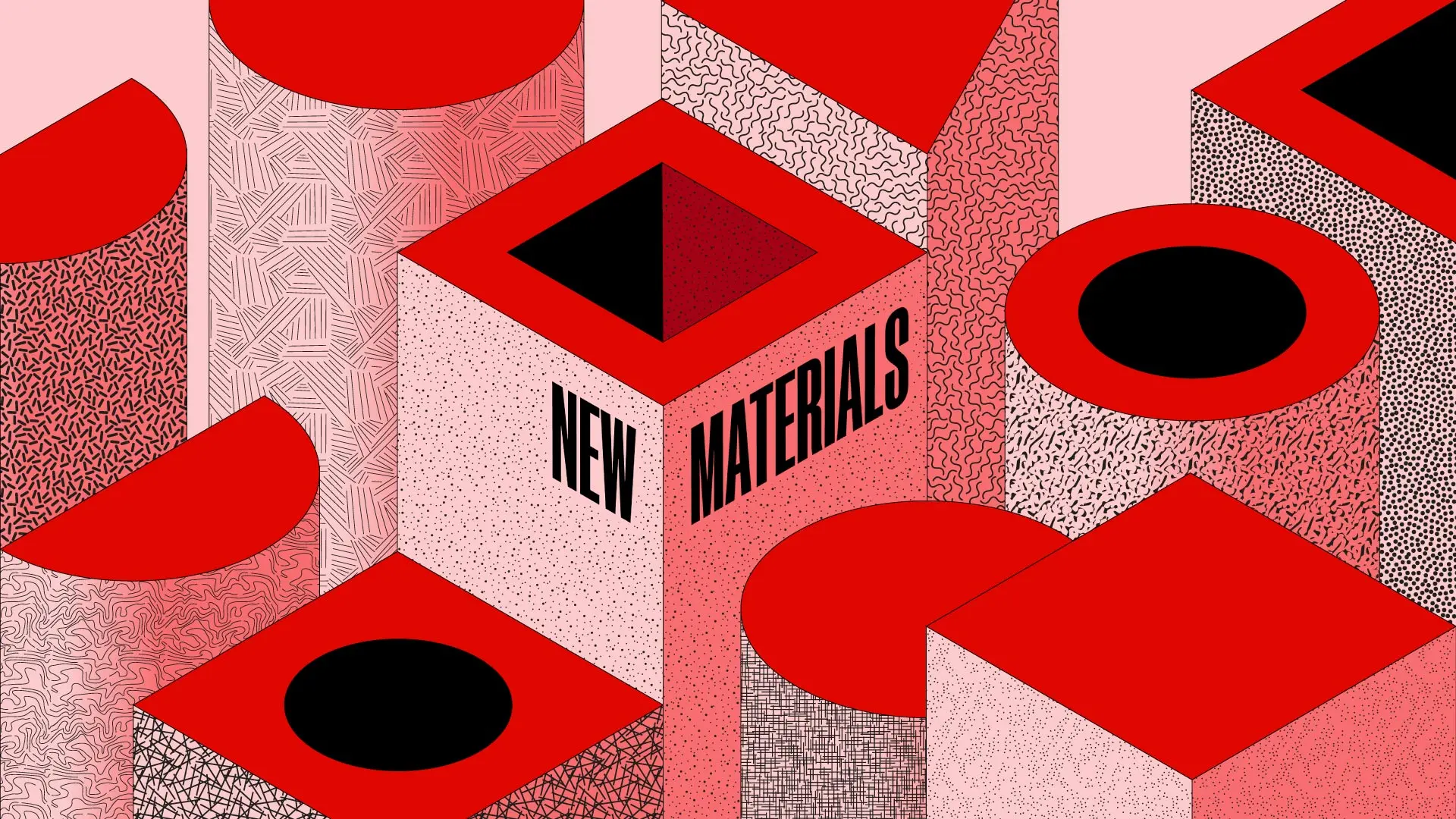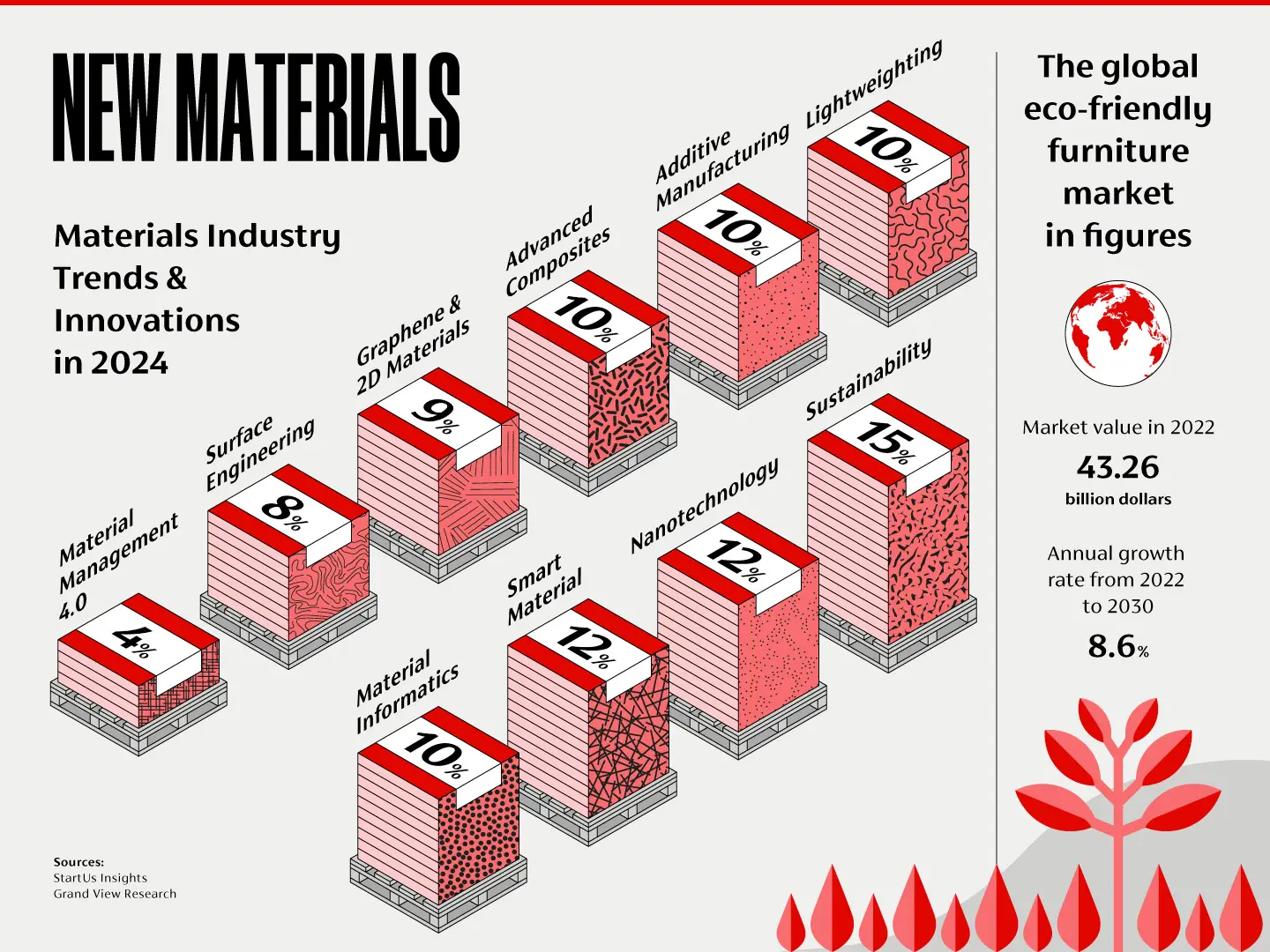From BIG to David Chipperfield, Frank Gehry to Snøhetta: a world tour of the best buildings set to open in 2026
About innovative and sustainable materials

Infographic by Davide Mottes
How are they applied to the design and architecture industry? And how important is the technological component? An excerpt from Design Forward, the new podcast hosted by Maria Cristina Didero
Innovation grows out of insights into new necessities and is fuelled by creativity and technology to find solutions. The Dart Lab research group at the University of Michigan has developed a new material for use in the construction industry. It’s a solution that makes it possible to replace traditional concrete formwork with a completely reusable material made of a mix of degradable biopolymers and sawdust. The result is a material that can be modelled and used with 3D printing technology. The research team produced a structural column nearly two metres tall by incrementally pouring concrete into its centre. After waiting for the concrete to dry, the sawdust formwork was peeled off to reveal the column. But applications aren’t limited to the building industry, as researcher Muhammad Dayyem Khan explains: “there are many possible applications. We envision small, decorative items for example, but it could be your walls, doors and windows”.

Infographic by Davide Mottes
We now move to Europe, to Copenhagen in the heart of Scandinavia. Natural Material Studio is a research project set up by Bonnie Hvillum and specializing in circular design. In tandem with designer Zuzanna Skurka, it has designed a series of fabrics produced using waste bricks sourced from demolition sites (hence the project’s name, Brick Textiles). The fabrics were made by combining an amalgam of crushed brick and Procel, a special protein-based compostable bioplastic with natural softener and pigments, developed by Natural Material Studio.
Talking of reuse, “Estetiche Sommerse” is a project by Cara/Davide, a young Italian creative duo formed by Cara Judd and Davide Gramatica. In a new development of the concept of waste, they have made terrazzo and palladiana flooring using discarded printed circuit boards from which dangerous glued components have been removed. And from casting forms – the containers used in foundries and discarded at the end of the process – Cara/Davide created a coffee table, a chair, a stand and a series of candelabras. What was once waste can become a resource or an incentive to address the challenges of the day in line with the principles of the circular economy.


 Sustainability
Sustainability








